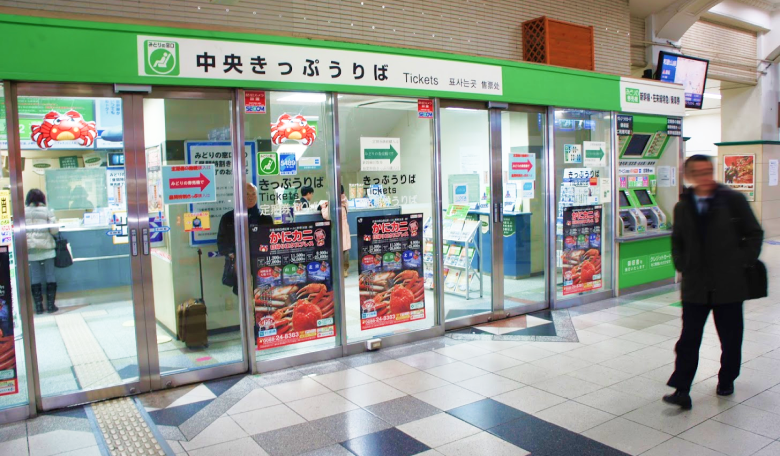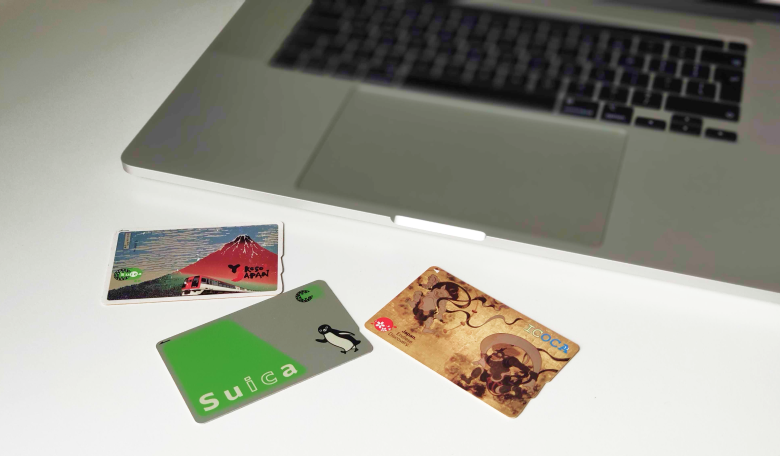The Suica Card and Other IC Cards
Those looking to travel in Japan probably already know how useful a Japan Rail Pass can be. What they might not realise is that an IC card is almost just as vital and handy to have on your trip when travelling by train.
While a JR Pass makes travelling throughout Japan cheaper and easier, IC cards are all about convenience. These prepaid train cards make taking trains in Japan as easy as tapping a card, which is very helpful for tourists easily overwhelmed trying to navigate Japan’s public transport systems. True to the style of modern Japan IC cards can also be used to pay for all sorts of other things, from buses and the metro, to even convenience stores and vending machines.
So, here’s everything you need to know about the IC cards Japan almost seems to run on.
What is an IC Card?
Now what is an IC card precisely you may ask? IC cards are prepaid travel cards that you can use to pay for travel on all kinds of public transport within major cities and around regions. Passengers simply purchase a rechargeable card, load money on to it and use that “stored fare” to pay for things, similar to a debit card.
The main place to use these prepaid cards is for train travel, swiping the IC card at automatic ticket gates at the start and end of your journey. Besides not having to spend time working out ticket fares and purchasing a new ticket each journey, another benefit is that you don’t have to worry about purchasing transfer tickets when switching between railways operated by two different companies.
But IC Cards are able to pay for much more than just train travel. They also work on city bus networks, metro and subway lines, vending machines, convenience stores and even some restaurants. With your own personal IC card, the complexity of so many aspects of travel in Japan is suddenly solved with the touching of a card to a reader.
Using an IC Card in a Store
Many stores in Japan accept IC cards as a contactless payment method.
Tell the staff:“IC Kado de onegaishimasu”
and complete the transaction with a single tap.
Using IC cards with vending machines
Many vending machines allow for payment by IC card, simply press the button for the item you want. Then hold your IC card near the payment pad, and you’re good to go.
How to charge an IC card
IC cards can be charged at any ticket machine, at the station or in person at a ticket window. To charge your card using a machine, insert your card, select the amount you want to charge, then put the cash into the machine and your card is charged. In person, tell the staff the amount you want to top up. Then pay either by cash or credit card.
The Difference Between the JR Pass and IC Cards
There are four big differences between JR Passes and IC cards. The most important is that rail passes let you travel between different regions around Japan, whereas IC cards don’t let you travel outside or between IC card areas (in most cases). This means you can’t use an IC card to travel from Tokyo to Sapporo or Nagano, both of which you can do with the JR Pass.
The other difference is that rail passes are a fixed price for train travel on JR trains only, while IC cards let you pay as you go across many different networks. Ultimately, you may even use both on your trip: a JR Pass for travel by Shinkansen and an IC card for local railways and city metros.
Third, a JR Pass will usually save you money because it offers discounted travel. IC cards offers convenience, allowing you to pay for several trains and journeys on one card but having an IC card does not mean you will receive a discounted rail fare.
Finally, JR passes are only good for rail travel whereas IC cards can be used for vending machine purchases and convenient stores.
The Ten Main IC Cards
The Japan IC card providers are typically train and bus operators, with many companies introducing their own IC Cards. Working out which IC card to use has naturally become a question of travellers. There are ten major IC cards in Japan, but they are all mostly compatible and integrated, effectively meaning you can use and even recharge a Tokyo IC card in Osaka and vice versa.
Suica
Suica, one of the most common IC cards, is provided by JR East and covers the Greater Tokyo, Niigata and Sendai regions. Along with the regular Suica card, there is also a special Welcome Suica pass meant for foreign tourists that only lasts for 28 days, requires no deposit and gets no refund. Despite these small changes, this card functions like all other Suica cards.
Pasmo
Pasmo is the IC card issued for the railway, metro and bus operators in Tokyo that don’t belong to the JR network. Because of their overlapping territory, many travellers want to know the benefits of Pasmo vs Suica. There is also a special Pasmo card for foreign tourists called Pasmo Passport that again lasts 28 days, requires no deposit and gets no refund.
Icoca
Icoca is the IC card provided by JR West for that region’s JR trains covering the regions of Kansai with Osaka and Kyoto in it, as well as Chugoku and Hokuriku. Again, there is a special Icoca card called the Kansai One Pass for foreign tourists, although this card also provides discounts on certain attractions in the region. Another great option for tourists is the Icoca & Haruka pack, which combines a standard Icoca IC card with a discounted ticket for the Haruka Express from Kansai Airport to both Osaka and Kyoto.
Kitaca
Kitaca is the prepaid IC card issued by JR Hokkaido for JR trains in the region around Sapporo, as well as the city’s subways, buses and tram.
Toica
Toica is the IC card provided by JR Central for JR trains in the Tokai region in and around Greater Nagoya.
Manaca
Manaca is the prepaid IC card issued by the operators of the railways, subways and buses in Nagoya that aren’t part of the JR or Kintetsu company networks.
Sugoca
Sugoca is the IC card offered by JR Kyushu for JR trains in the Greater Fukuoka, Kumamoto, Kagoshima, Oita and Nagasaki regions of Kyushu.
Nimoca
Nimoca is the prepaid IC travel card issued by Nishitetsu for trains and buses operated by the company in Greater Fukuoka and other parts of Kyushu.
Hayakaken
Hayakaken is another Kyushu IC card that is offered by Fukuoka City for use on the Fukuoka Subway.
Pitapa
Pitapa is the IC Card issued by companies outside the JR network in the Kansai region around Osaka. It’s worth noting that Pitapa is a postpaid card rather than prepaid and requires registration with a bank account attached. This means it’s not very well suited to foreign tourists on a short visit to Japan.
Frequently Asked Questions About IC Cards
Now, you will be charged a 500 yen deposit when you get the card. When you are done with the card, you can return your IC card to a station attendant. On return you will get your 500 yen deposit back, as well as the remaining balance on the card, minus a 220 yen processing fee. Unfortunately, IC cards can only be returned to the company that issued it, so you’ll need to be in the right region to return the card for its deposit.
Since all of the main IC cards have been more-or-less integrated and work in each other regions, it really doesn’t matter which IC card you get. Whether it’s a Suica or Pasmo card, or any of the others, you’ll still be able to use them all the same for travelling within each city or region. Most people just stick with the type of IC card that’s available where they arrive.
Generally speaking, IC cards cover trains, buses, airport shuttles and metros in major cities like Tokyo, Osaka, Kyoto, Sendai and Fukuoka.
Unlike a JR Pass which is designed to help travellers save money when making lots of train trips, you do not get a discount paying for train tickets with an IC card. The benefits of an IC card are more focused towards convenience rather than savings.
When shopping at convenience stores, shops, restaurants and vending machines you can often use your IC card to pay. To know if they accept IC cards, simply look for the IC card logo displayed as businesses often do for credit cards.
Now, using your IC card like this will likely mean you have to recharge it sooner or later. To recharge or top up your IC card, make your way to a train station and visit either a ticket machine or a dedicated re-charging machine. And just as they can be used interchangeably, you can charge IC cards at other companies’ machines, e.g. recharging a Suica card at a Pasmo machine.
You will see your current balance on your IC card shown on a small display when used at ticket gates or making in store purchases. You can also check your balance and see your purchase history at ticket machines in train stations.
Rather than getting a physical card, it is possible to use your iPhone as a virtual Suica card. iPhone 8 models and later can have a Suica card added to them, through the “Transit Cards” option in the Wallet app. Your iPhone will then use Apple Pay to pay for your Suica charges.
There is a small amount of overlap between what is covered by a JR Pass and an IC card. However, in most cases travellers will benefit from having both a JR Pass and an IC card on their trip. In many situations you’ll find that only one is useful, like saving on high-speed trains with a JR Pass or paying for the local metro with your IC card.

